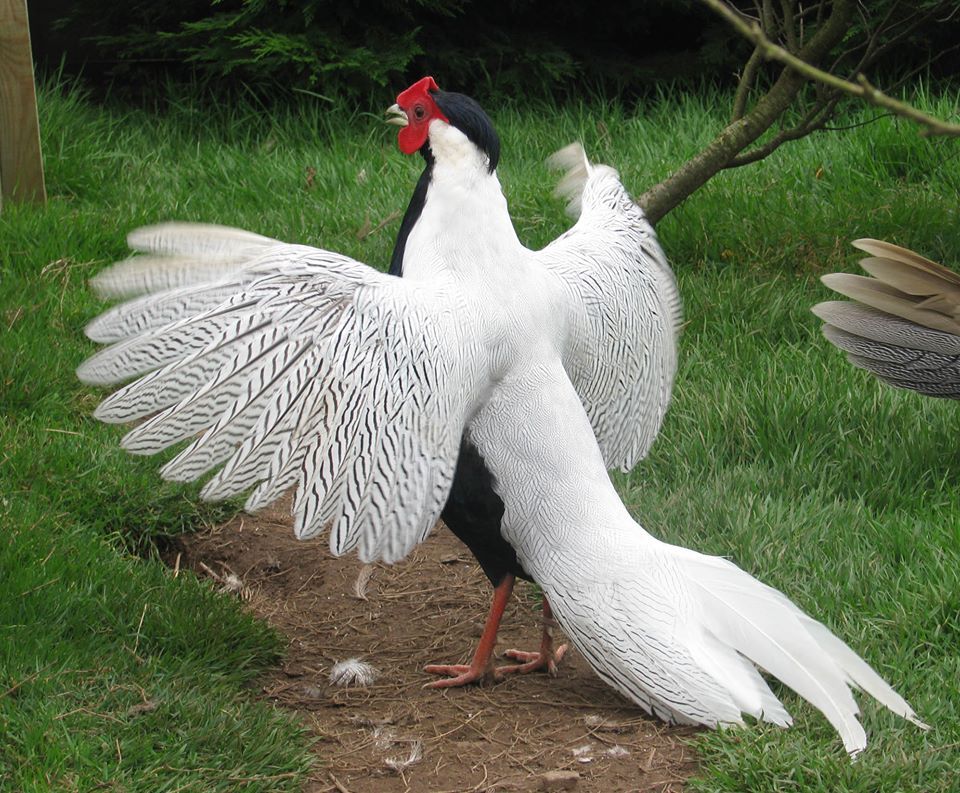Silver Pheasant
(Lophura nycthemera)
Range: Mountainous areas of eastern and southern China, along with other areas of southeast, mainland Asia. They have also been introduced into the wild in Hawaii
Habitat: Varies; grasslands, deciduous forests, evergreen forests, bamboo thickets
Description: A large pheasant, the male is mostly a brilliant white with black lines. His belly is black and he has a large, bare, red-skinned area around the eye. His legs are also red, which separates the Silver Pheasant from the Kalij Pheasant.
Status in the wild: Mostly, the population of Silver Pheasants in the wild is stable, but some subspecies may be more threatened than others.
Avicultural Data
Status in aviculture: Silver Pheasants are very well established in aviculture, as they are considered a good “starter” breed for people who want to learn more about raising pheasants.
Breeding Season: Very early - February or March to May
Clutch Size: 6-15 eggs
Incubation Period: 26-27
Miscellaneous Notes: Some breeders report that males can be aggressive, but others have no problems.
Silver Pheasant hens are known to go broody and make great mothers.
They require quite a large aviary, with plenty of shade and trees/shrubs for roosting.
Silver Pheasants are frequently depicted in Chinese art and poetry.

